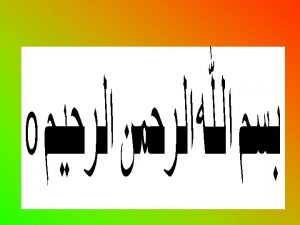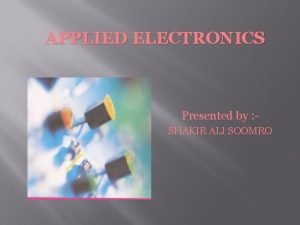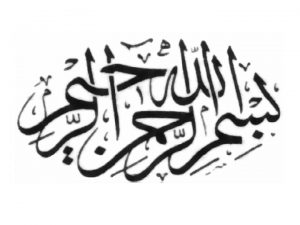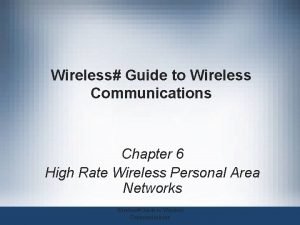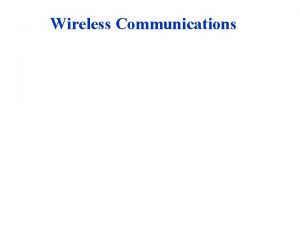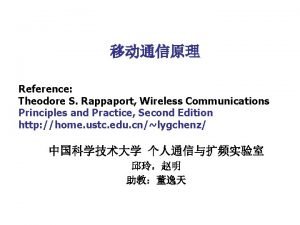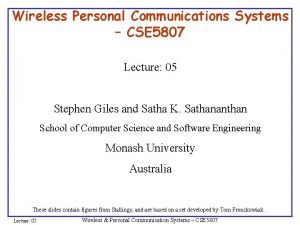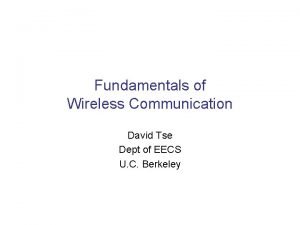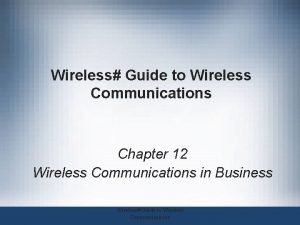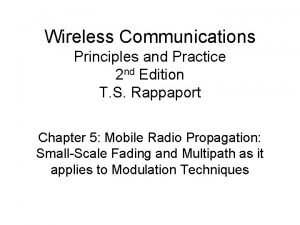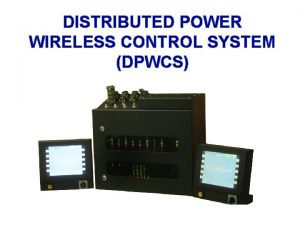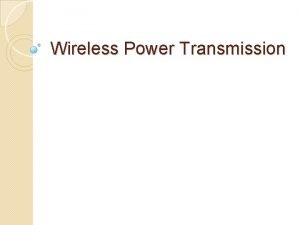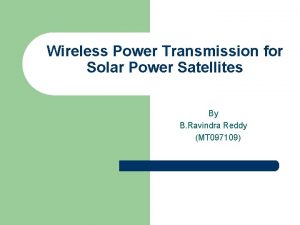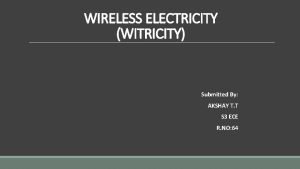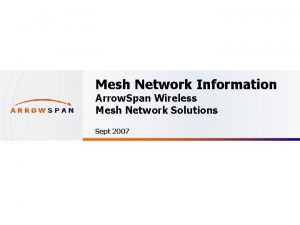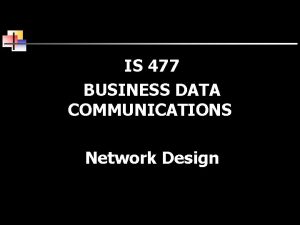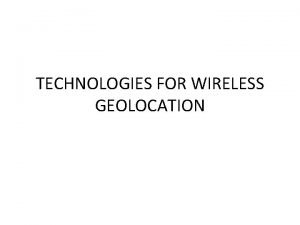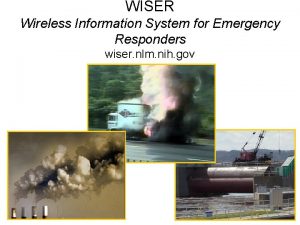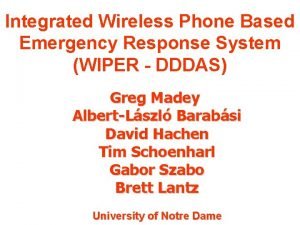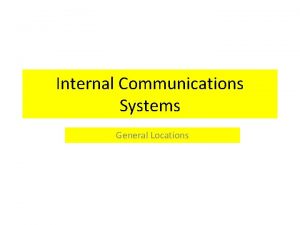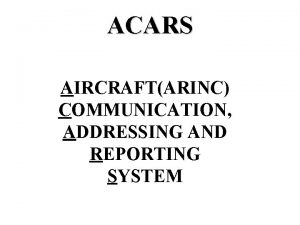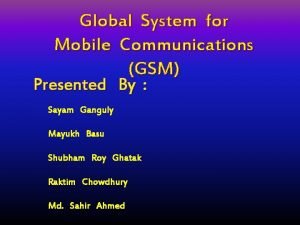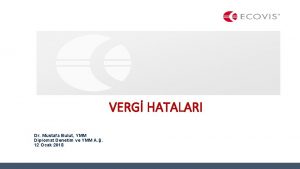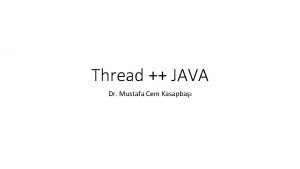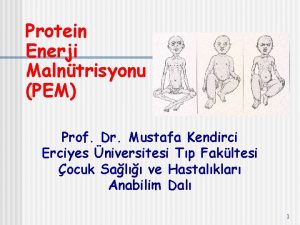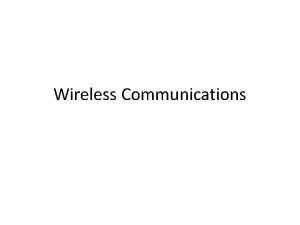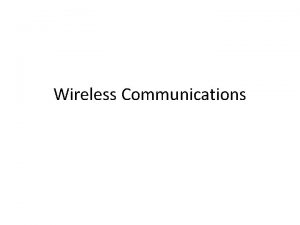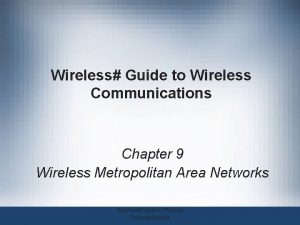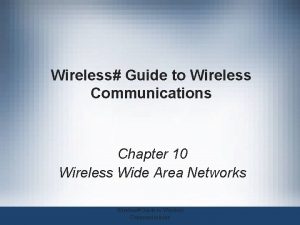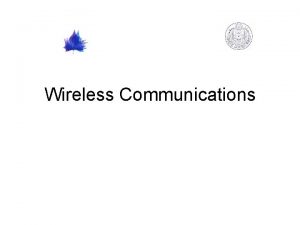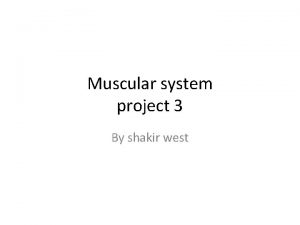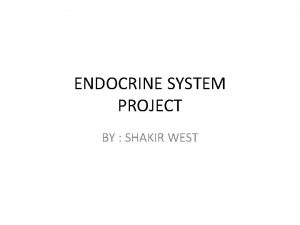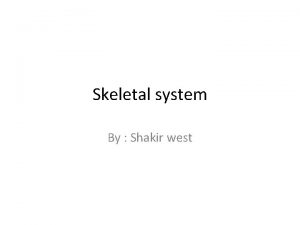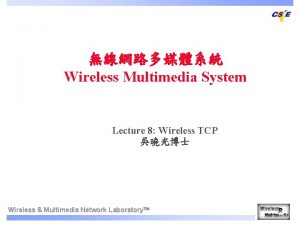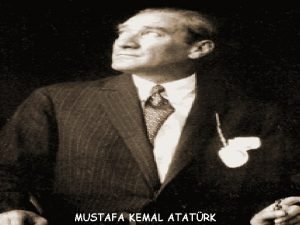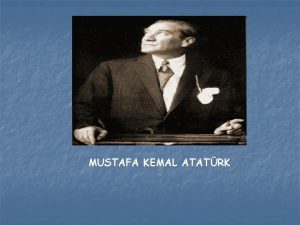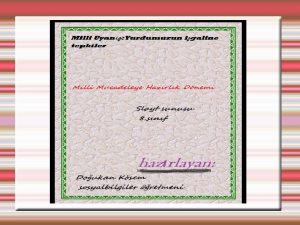Wireless Communications System Design Dr Mustafa Shakir Power



































- Slides: 35


Wireless Communications: System Design Dr. Mustafa Shakir

Power Control in Mobile Com

What is power control ? n n Both the BS and MS transmitter powers are adjusted dynamically over a wide range. Typical cellular systems adjust their transmitter powers based on received signal strength. TYPES OF POWER CONTROL o Open Loop Power Control It depends solely on mobile unit, not as accurate as closed loop, but can react quicker to fluctuation in signal strength. In this there is no feed back from BS. o Closed Loop Power Control In this BS makes power adjustment decisions and communicates to mobile on control channels

Why power control ? Near-far effect q Mechanism to compensate for “channel fading” q Interference reduction, q prolong battery life q

Improving Capacity in Cellular Systems n n Cost of a cellular network is proportional to the number of Base Stations. The income is proportional to the number of users. q Ways to increase capacity: q New spectrum – expensive. PCS bands were sold for $20 B. q Architectural approaches: cell splitting, cell sectoring, microcell zones. q Dynamic allocation of channels according to load in the cell (non-uniform distribution of channels). Improve access technologies.

Cell Splitting n n n Cell Splitting is the process of subdividing the congested cell into smaller cells (microcells), Each with its own base station and a corresponding reduction in antenna height and transmitter power. Cell Splitting increases the capacity since number of clusters over coverage region would be increased thus increasing the number of channels. New cells added having smaller radius than original cells and by installing these smaller cells (called microcells ) between existing cells , capacity increases due to additional number of channels per unit area.

Cell splitting diagram 1


An Example n n The area covered by a circle with radius R is four times the area covered by the circle with radius R/2 The number of cells is increased four times The number of clusters the number of channels and the capacity in the coverage area are increased Cell Splitting does not change the cochannel re-use ratio Q =D/R

Transmit Power n n n New cells are smaller, so the transmit power of the new cells must be reduced How to determine the transmit power? The transmit power of the new cells can be found by examining the received power at the new and old cell boundaries and setting them equal Pr(at the old cell boundary) is proportional to Pt 1 * R-n Pr(at the new cell boundary) is proportional to Pt 2 * (R/2)-n

Transmit Power n n n Take n=4, we get Pt 2 = Pt 1/16 We find that the transmit power must be reduced by 16 times or 12 d. B in order to use the microcells to cover the original area. While maintaining the same S/I.

Application of cell splitting n n When there are two cell sizes one cant simply use the same transmit power for all cells. If larger transmit power used for all cells some smaller cells would not be sufficiently separated from co channel cells. Using smaller Pt the larger cells might be left unserved. So old channel broken to two channel groups corresponding to smaller and larger cell reuse. Larger cell for less frequent hand off. Antenna down tilting focusing radiated energy from base station to the ground to limit radio coverage of newly formed cells.


Cell Sectoring n n n Co channel interference may be reduced by replacing omni directional antenna by several directional antennas. Given cell will receive interference and would transmit with fraction of available co channel cells. Each sector uses directional antenna at the B. S and assigned a set of channels. Partitioning into three 120 deg. sectors or six 60 deg. sectors. Amount of CCI reduced by number of sectors. Reduced Tx Power… 15

Cell Sectoring

Example for sectoring

Explanation For Cell Sectoring

Effects of Sectoring n n Reduction in interference offered by sectoring would enable to reduce the cluster size N and additional degree of freedom in channel assignment. Increased number of antennas with shrinking cluster size and decrease in trunking efficiency due to channel sectoring at base station. Since sectoring reduces the coverage area of a particular group of channels the number of handoffs increases Available channels subdivided and dedicated to a specific antenna thus making up of several smaller pools contributing to decrease in trunking efficiency.

Repeaters n n n To provide dedicated coverage for hard to reach areas Radio retransmitters for range extension. Upon receiving signals from base station forward link the repeater amplifies and reradiates the base station signals to specific coverage region. In building wireless coverage by installing Distributed Antenna Systems. Repeaters must be provisioned to match the available capacity from the serving base station.

Repeaters For Range Extension

Microcell Zone n n n The increased number of handoff as a result of sectoring would result in an increased load on switching and control link elements of the mobile system. Division into microcell zones and each of the three are connected to a single base station and share the same radio equipment. Zones connected by a coaxial cable, fiber optic cable or microwave link to the base station. Handoff not required while mobile travels between zones within cell. Channel switching and a channel active only within zone of travelling.



Scenario n n n In Micro cell zone scenario each hexagon represents a zone while the group of three hexagons represent a cell. Zone Radius Rz is one hexagon radius. Capacity of Microcell is directly related to distance betw. Cochannel cells and not zones. No handoffs is required at the MSC. The base station radiation is localized and interference is reduced

Trunking & Grade Of Service

Trunking and Grade of Service (GOS) n Trunking n n A means for providing access to users on demand from available pool of channels. q With trunking, a small number of channels can accommodate large number of random users. q Telephone companies use trunking theory to determine number of circuits required. Trunking theory is about how a population can be handled by a limited number of servers.

Terminologies Erlang: Ø One Erlang: When a circuit is busy for one hour it handled a traffic of one erlang. q Grade of Service (GOS): probability that a call is blocked (or delayed). q Set-Up Time: Traffic intensity is measured in Erlangs: Ø time to allocate a channel. q Blocked Call: Call that cannot be completed at time of request due to congestion. Also referred to as Lost Call. v

Terminologies Contd. Holding Time: (H) Average duration of typical call. q Load: Traffic intensity across the whole system. q Request Rate: ( ) Average number of call requests per unit time. q

Traffic Measurement (Erlangs) n n Traffic per user Au = H where is the request rate and H is the holding time. For U users the load is A= U Au If traffic is trunked in C channels, then the traffic intensity per channel is Ac= UAu /C Erlang B:

The Erlang B Chart

Example : An urban area has 2 million n n residents. Three competing cellular systems provide service: System A 394 cells x 19 channels/cell. System B 98 cells x 57 channels/cell. System C 49 cells x 100 channels/cell. For each user = 2 calls/hr, H = 3 min, GOS = 2% blocking. Find the number of users that can be supported by each system. Note that these are not simultaneous users. q q q n System A: Au= H = 2 x 3/60 = 0. 1 Erlangs. From the curve for GOS = 0. 02 and C = 19 => A = 12 Er. Users per cell (U) = A/Au = 12/0. 1 = 120 users/cell x 394 cells = 47, 280 users can be served. Market penetration = 2. 36%.

No. of subscribers q System C: Prob Blocking = 2% = 0. 02 q C =100 q Au = H = 2 x 3/60 = 0. 1 Erlangs. q From table, A = 88 Erlangs. q Users per cell U = A/Au = 88/0. 1 =880 users q 880 users/cell x 49 cells = 43, 120. Market penetration = 2. 156%. q n q q q q System B: Prob Blocking = 2% = 0. 02 C =57 Au = H = 2 x 3/60 = 0. 1 Erlangs. From table, A = 45 Erlangs Users per cell U = A/Au = 45/0. 1 = 450 users/cell x 98 cells = 44, 100. Market penetration = 2. 21%.

q q q Total No. of supported users = 47, 280 + 44, 100 + 43, 120 = 134, 500 users. Total market penetration for 3 systems = 6. 725%

 Dr mustafa shakir
Dr mustafa shakir Mustafa shakir contacts
Mustafa shakir contacts Dr mustafa shakir
Dr mustafa shakir Dr mustafa shakir
Dr mustafa shakir Dr mustafa shakir
Dr mustafa shakir What are wireless devices and the wireless revolution
What are wireless devices and the wireless revolution Guide to wireless communications
Guide to wireless communications Andrea goldsmith wireless communications
Andrea goldsmith wireless communications Subsea wireless communications
Subsea wireless communications Theodore s rappaport wireless communications
Theodore s rappaport wireless communications Wireless personal communications
Wireless personal communications Fundamentals of wireless communication solution
Fundamentals of wireless communication solution Guide to wireless communications
Guide to wireless communications Sircim
Sircim Dpwfs
Dpwfs Available water definition
Available water definition Syra shakir
Syra shakir The real lesson 21
The real lesson 21 Advantages and disadvantages of wireless power transmission
Advantages and disadvantages of wireless power transmission Wireless power transmission project report doc
Wireless power transmission project report doc Wireless electricity
Wireless electricity Power angle curve in power system stability
Power angle curve in power system stability Outdoor wireless mesh network design
Outdoor wireless mesh network design Communications network design
Communications network design Wireless geolocation system
Wireless geolocation system Wireless intrusion prevention system
Wireless intrusion prevention system Wireless information system for emergency responders
Wireless information system for emergency responders Wireless response system
Wireless response system Communications system toolbox
Communications system toolbox Internal communications system
Internal communications system Pv&e
Pv&e Aircraft communications addressing and reporting system
Aircraft communications addressing and reporting system Global system for mobile communications
Global system for mobile communications Mustafa bulut ymm
Mustafa bulut ymm Threads consume cpu in best possible manner
Threads consume cpu in best possible manner Pem dereceleri
Pem dereceleri
